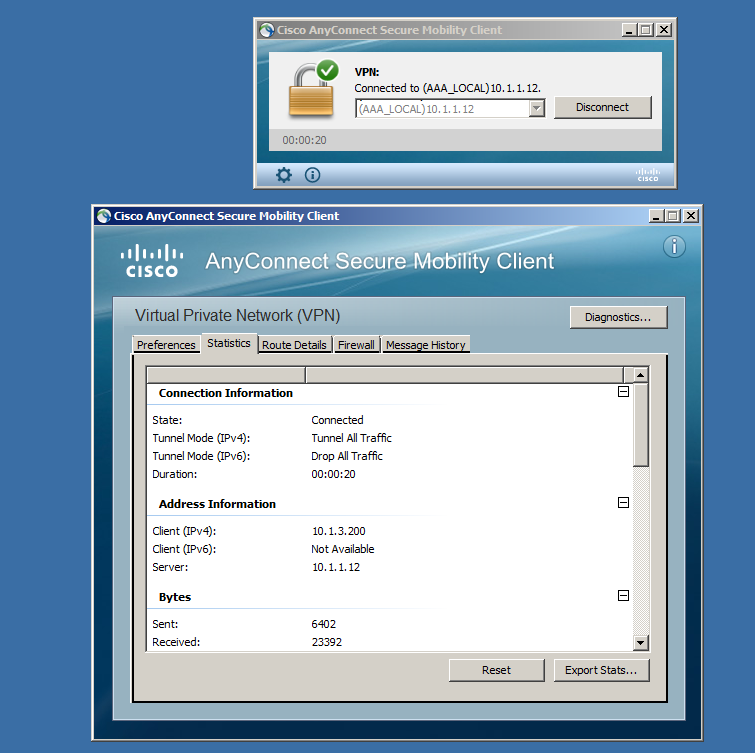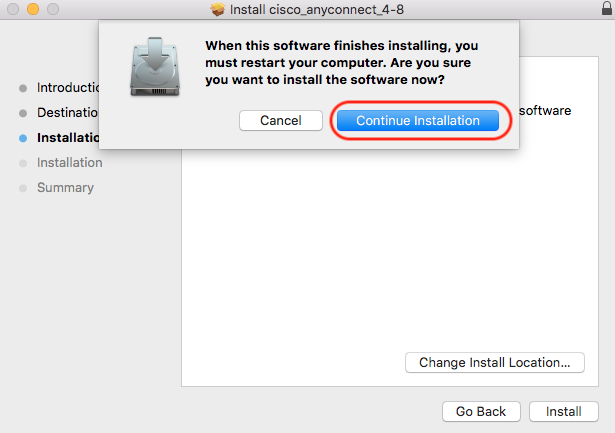

In your Applications folder, go to the Cisco folder and double-click the Cisco An圜onnect Secure Mobility Client.NOTE: The VPN will not connect if you are connected to the FBRI wired or wireless network. The requirement to manually enable the software extension is an operating system requirement. Starting with macOS 10.13 High Sierra: During the installation, you will be prompted to enable the An圜onnect software extension in the System Preferences -> Security & Privacy pane.When you see this screen, UN-check everything with the exception of VPN: ( VPN option grayed out? Go here.).

Double-click on An圜onnect.mpkg to run the installer, then follow the steps to complete the installation.An icon will appear on the desktop called An圜onnect, and a separate window will open. In your Downloads folder, double-click the file you just downloaded to open it.Download the An圜onnect VPN client for Mac OS X.Please skip to Starting the VPN Client below. If you prefer to use the built-in VPN client, refer to VPN: Download macOS VPN Client Configuration Files for configuration instructions.NOTE: If you have an FBRI-provided Mac, the Cisco Anyconnect Client is already installed. Authenticate via Duo two-factor authentication.


Run the downloaded UMVPN-anyconnect file to install the client.Staff, Faculty, Students, or Sponsored Affiliates.Select the appropriate VPN client for your university role:.With the exception of Conference Participant/Short Term Guest (Type 3) sponsored accounts, sponsored affiliates can use the VPN.ĭownload and install the Cisco An圜onnect VPN Client.These pages provide VPN configurations for unmanaged or personal devices (e.g., research users, BYOD users, etc.). If you need help connecting to the VPN on a managed device, please contact the ITS Service Center. See instructions to connect to UMVPN for MiWorkspace managed Macs. If you use a University of Michigan MiWorkspace managed device, VPN software and profiles are already configured for you.


 0 kommentar(er)
0 kommentar(er)
